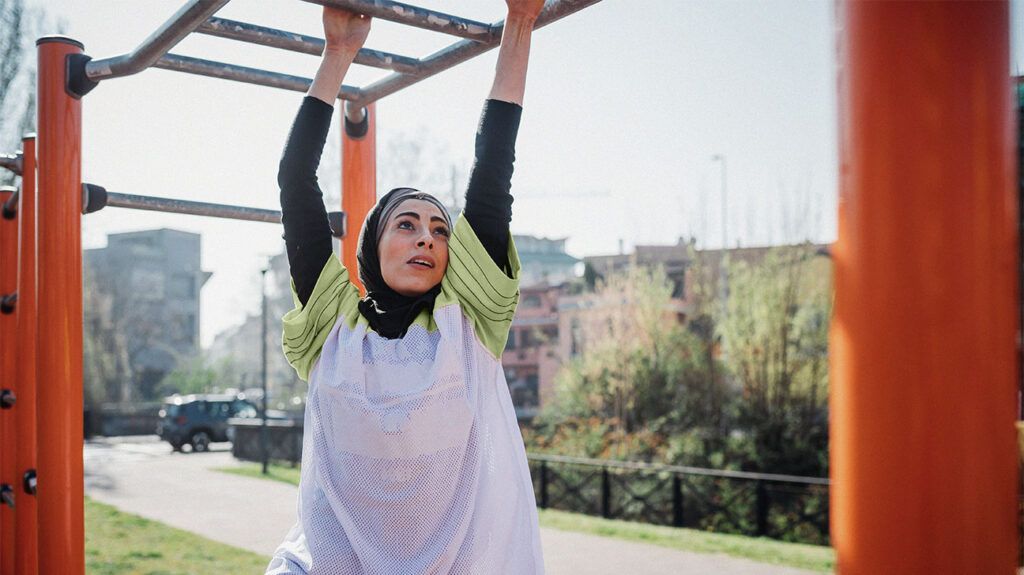Pain in the sternoclavicular joint can result from inflammation, injury, or tissue degeneration. Treatment can include physical therapy, medication, and sometimes surgery.
The sternoclavicular joint connects the clavicle (collarbone) to the sternum (breastbone) at the base of the neck. It is crucial for enabling the arm’s complete range of movement.
Common causes of pain in the sternoclavicular joint include trauma from accidents, sports injuries, arthritis, or wear and tear over time.
Treatment approaches include physical therapy, medication to help manage inflammation and pain, or surgical interventions in more severe cases.
This article explores the nature of sternoclavicular joint pain, its underlying causes, and treatments to alleviate symptoms and restore function.

Sternoclavicular joint pain arises from discomfort or inflammation where the collarbone and breastbone connect.
This joint plays a crucial role in the movement and support of the shoulder, so pain can significantly affect a person’s ability to perform everyday activities.
What is the sternoclavicular joint?
The sternoclavicular joint is a crucial articulation at the base of the neck, where the clavicle meets the sternum. It is a significant support structure for the shoulder, facilitating a wide range of arm movements.
Despite being robust, the sternoclavicular joint is susceptible to various injuries and diseases, leading to pain and dysfunction.
Common symptoms of sternoclavicular joint pain include:
- sharp or aching pain in the area of the sternoclavicular joint
- swelling and tenderness over the joint
- warmth around the joint
- difficulty moving the shoulder or arm without discomfort
Individuals should seek medical attention if sternoclavicular joint pain persists or worsens or shoulder movement becomes increasingly restricted. Seeking medical advice is also important if swelling, discoloration, or warmth develops around the joint.
If a person’s symptoms do not improve with home treatment after a few days, consulting a healthcare professional is crucial. Prompt medical evaluation helps diagnose the underlying cause and determine the appropriate treatment, preventing complications and speeding recovery.
Injuries to the sternoclavicular joint can vary in severity,
- Sprains: The stretching or tearing of ligaments in the joint.
- Subluxations: The joint becomes partially dislocated.
- Dislocations: The bone ends in the joint entirely separate.
- Fractures: A crack or break occurs in the clavicle or sternum near the joint.
The causes of sternoclavicular joint pain can include:
- Trauma: Direct injuries to the joint are common sources of pain, often resulting from accidents, falls, or sports-related impacts. Such trauma can lead to sprains, dislocations, or fractures.
- Arthritis: Like all joints, the sternoclavicular joint is susceptible to arthritis, which involves degeneration of joint cartilage. Osteoarthritis results from wear and tear over time, while rheumatoid arthritis is an autoimmune condition that causes joint inflammation. Both forms of arthritis can lead to joint pain, stiffness, and swelling.
- Infection: Although less common, infections can occur in the joint through spreading bacteria from other parts of the body or directly due to injury or surgery. Such infections can cause severe pain, discoloration, swelling, and fever, requiring immediate medical attention.
- Overuse: Repetitive movements, especially those involving lifting, pushing, or pulling, can place continuous stress on the joint, leading to overuse injuries. These conditions can affect athletes or individuals whose activities or occupations involve frequent shoulder use.
Diagnosis typically involves a
A doctor assesses joint pain, swelling, and range of motion. They also take a medical history to understand any recent injuries, sports participation, or repetitive movements that could have stressed the joint.
The doctor may order imaging tests, such as X-rays or CT scans, to further evaluate the joint and identify specific causes of pain.
The treatment for sternoclavicular joint pain varies based on the cause, severity of the symptoms, and the individual’s overall health. It ranges from nonsurgical, conservative approaches to surgical interventions in more severe or unresponsive cases.
Nonsurgical
Nonsurgical treatments aim to alleviate pain, reduce inflammation, and restore function without surgery. These may include:
- Rest and activity modification: Limiting activities that aggravate the pain allows the joint to heal naturally. Using a sling can make the joint more comfortable and limit movement.
- Ice therapy: Applying ice packs to the joint several times daily can help reduce swelling and relieve pain.
- Compression: Wearing an elastic bandage or support wrap may provide additional support and help decrease swelling.
- Physical therapy: A physical therapist can design a personalized exercise program to strengthen the muscles around the joint, improve the range of motion, and reduce pain.
- Medications: Nonsteroidal anti-inflammatory drugs, such as ibuprofen or naproxen, can help manage pain and inflammation. Sometimes, corticosteroid injections directly into the joint may help.
Surgical
Doctors may consider surgery if sternoclavicular joint pain does not respond to conservative treatment or when there is significant structural damage to the joint. Surgical options
- joint stabilization to repair or reconstruct the ligaments around the joint
- joint resection to remove a small portion of the clavicle
- total joint replacement if the damage is extensive
The outlook for sternoclavicular joint pain depends on the cause and severity. In many cases, people recover with minimal long-term effects.
Preventing sternoclavicular joint pain involves:
- modifying repetitive activities to help reduce strain on the joint
- using appropriate safety equipment during sports
- performing exercises to strengthen the muscles around the shoulder
Sternoclavicular joint pain affects the joint at the base of the neck where the clavicle meets the sternum.
Symptoms include pain, swelling, and limited movement. Treatment varies from rest and physical therapy to surgery in severe cases.
With proper management, the outlook is generally favorable, and preventive measures can help reduce the risk of future injuries.
